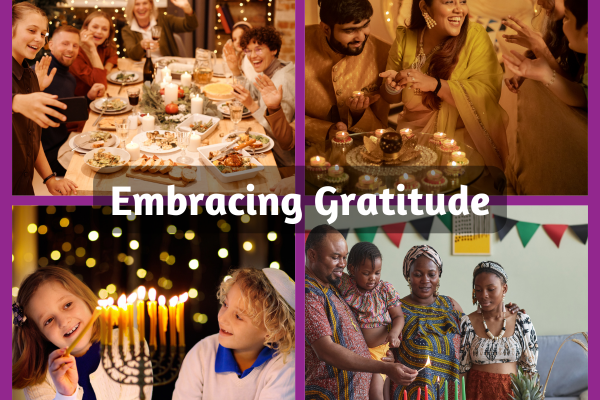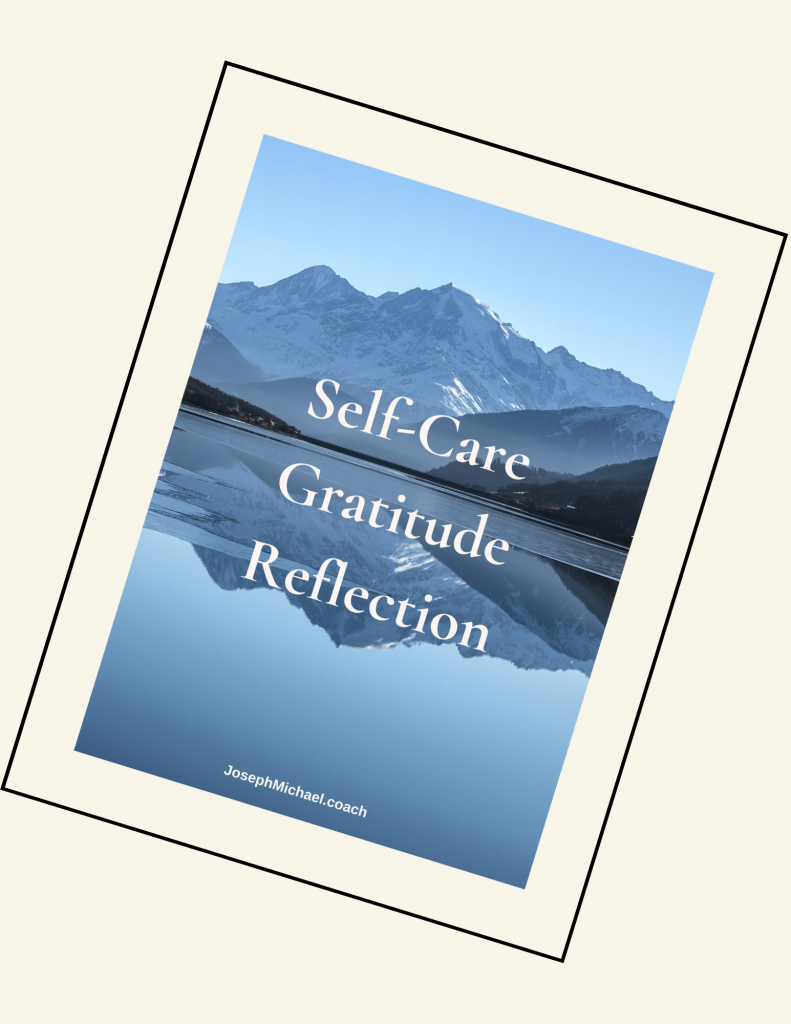
December’s Celebrations of Light, Faith, and Community
Across cultures and traditions, gratitude remains at the heart of these holidays.
The month of December shines brightly with diverse celebrations that honor faith, light, generosity, and togetherness. Across cultures and traditions, gratitude remains at the heart of these holidays. It connects us to something greater—whether divine, familial, or communal—and offers a moment to reflect, give thanks, and celebrate.
Let’s explore some of December’s most significant holidays and the role gratitude plays in each.

1. Hanukkah: Gratitude for Miracles and Resilience
Hanukkah, the eight-day Jewish Festival of Lights, commemorates the rededication of the Second Temple after the Maccabean Revolt. Central to the celebration is the miracle of the oil: though there was only enough oil to light the menorah for one night, it lasted for eight days.
The Role of Gratitude: Hanukkah reminds us to find light in the darkest times. Families express gratitude for miracles, resilience, and the ability to endure challenges. Sharing gifts and lighting the menorah each night cultivates a sense of thankfulness for family, freedom, and faith.

2. Christmas: Gratitude for Love and New Beginnings
For Christians, Christmas is the celebration of Jesus Christ’s birth—a symbol of divine love, hope, and salvation. It’s a time for giving, sharing joy, and gathering with loved ones to reflect on life’s blessings.
The Role of Gratitude: Christmas encourages gratitude for unconditional love—both human and divine. Whether through giving gifts, helping those in need, or cherishing time with family, it’s a moment to celebrate the spirit of generosity and love.

3. Feast of the Immaculate Conception: Gratitude for Grace
Observed by Roman Catholics on December 8, this feast honors the Virgin Mary’s conception without original sin. It is a celebration of Mary’s purity and role in bringing Christ into the world.
The Role of Gratitude: The feast inspires thankfulness for divine grace, faith, and the possibilities of redemption. It’s a time to reflect on blessings and renew spiritual commitment.

4. Yule: Gratitude for Nature’s Cycles
Yule, celebrated during the Winter Solstice, honors the rebirth of the sun and the return of longer days. For Pagans and Wiccans, it’s a time to reflect on the cycles of nature and life’s ever-turning wheel.
The Role of Gratitude: Yule encourages deep gratitude for nature’s beauty and the promise of renewal. As darkness gives way to light, families honor the Earth, express thankfulness for their harvests, and celebrate hope for the coming year.

5. Guru Gobind Singh’s Birthday: Gratitude for Spiritual Leadership
Guru Gobind Singh, the tenth Sikh Guru, was a warrior, poet, and spiritual teacher who established the Khalsa—a community devoted to truth and justice. His birthday is celebrated as a day of reflection and reverence.
The Role of Gratitude: Sikhs express gratitude for Guru Gobind Singh’s teachings, which emphasize courage, equality, and service. It’s a day to honor leadership that inspires compassion and strength.

6. St. Stephen’s Feast Day: Gratitude for Service and Charity
Observed on December 26, this Christian holiday commemorates St. Stephen, the first martyr, known for his selfless acts of charity. In many cultures, it is also celebrated as Boxing Day, a time to give to those in need.
The Role of Gratitude: Gratitude is expressed through acts of service and generosity, following St. Stephen’s example of helping the less fortunate. It’s a reminder that true abundance lies in giving.

7. Saint Nicholas Day: Gratitude for Generosity
Saint Nicholas, the inspiration for Santa Claus, is remembered on December 6. Known for his kindness and anonymous acts of charity, he symbolizes the joy of giving without expectation.
The Role of Gratitude: Families express gratitude for the spirit of generosity and kindness. It’s a day to teach children the joy of giving and the importance of compassion.

8. Bodhi Day: Gratitude for Enlightenment
Bodhi Day, celebrated by Buddhists on December 8, marks the day Prince Siddhartha achieved enlightenment and became the Buddha. It is a time to reflect on the path to wisdom, peace, and liberation.
The Role of Gratitude: Buddhists give thanks for the teachings of the Buddha and the opportunity to grow in mindfulness and compassion. It’s a day to cultivate inner peace and appreciate the present moment.

9. Day of the Virgin of Guadalupe: Gratitude for Faith and Miracles
On December 12, Catholics celebrate the appearance of the Virgin Mary to Juan Diego in 1531. This event holds deep significance, particularly for Mexican Catholics, as a symbol of divine love and unity.
The Role of Gratitude: The day inspires gratitude for faith, miracles, and cultural identity. Celebrations bring families and communities together to honor their shared spiritual heritage.

10. Las Posadas: Gratitude for Shelter and Togetherness
Las Posadas, celebrated from December 16-24, reenacts Mary and Joseph’s search for shelter in Bethlehem. This Mexican tradition involves prayer, music, and communal gatherings.
The Role of Gratitude: Families express thankfulness for the gift of shelter, hospitality, and community. It’s a powerful reminder to open our hearts and homes to others.

11. Kwanzaa: Gratitude for Heritage and Unity
Kwanzaa, celebrated from December 26 to January 1, is a time for African American families to honor their cultural heritage and values. Each day highlights a principle such as unity, purpose, and creativity.
The Role of Gratitude: Kwanzaa invites families to express gratitude for their roots, community, and shared values. Lighting the kinara candles becomes a meaningful symbol of hope and connection.
A Month of Gratitude: A Shared Thread
December’s holidays may be diverse, but they share a common thread: gratitude. Whether celebrating miracles, light, faith, or community, these traditions invite us to slow down, reflect, and give thanks.
This month, let’s:
-
-
- Express gratitude for the small and big blessings in our lives.
- Celebrate togetherness with family and friends.
- Share light by giving, serving, and showing kindness.
-
In a world that often moves too fast, these holidays remind us that gratitude isn’t just a feeling—it’s a practice that can bring light, joy, and meaning to our lives.
Which of these holidays resonates with you most? How can you bring the spirit of gratitude into your celebrations this season?
Wishing you a December filled with light, love, and thankfulness.
Happy New Year!
Joe is a husband, father, grandfather, author, speaker, educator, course creator, and parent/family coach.
He helps parents develop unity, find clarity, communicate, and develop consistency in their parenting with the Four C’s of Successful Families. You can find his work on social media.
In addition, the Four C’s newsletter is enjoyed by many as it encourages parents to self-care, build their relationships with their partners, and raise their children.
And he loves to golf!








